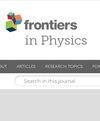恐惧情绪如何影响威胁环境中的集体运动
IF 1.9
3区 物理与天体物理
Q2 PHYSICS, MULTIDISCIPLINARY
引用次数: 0
摘要
引言集体行为的出现往往取决于个体之间通过自组织和局部信息交流进行充分互动。当面临外部威胁时,个体间的交流需要快速有效的信息交换,以描述突发事件的特征。在本文中,我们将情感机制引入动力学建模,研究应对威胁时的集体规避行为:方法:我们构建了一个涉及隐性动态威胁的场景,以测试集体在面临缺乏有效信息时的规避和生存能力。通过在建模中运用情绪的激活和扩散,集体可以自我组织并巧妙地降低风险,提高自身利益:结果:通过调整情绪激活、扩散和衰减的强度,可以产生丰富的行为。依靠对情绪的调节,集体在面临威胁时表现出不同的应对策略和行动模式,其中从宏观层面来看,最佳表现是可以预期的:通过分析这些现象,可以加深我们对集体应对威胁时的情绪状态以及智能集体运动控制方法的理解。本文章由计算机程序翻译,如有差异,请以英文原文为准。
How fear emotion impacts collective motion in threat environment
Introduction: The emergence of collective behavior often depends on the adequate interaction of individuals through self-organization and the exchange of local information. When facing external threats, communication among individuals requires both rapid and effective information exchange to characterize sudden events. In this paper, we introduce the mechanism of emotions into the modeling of dynamics to study collective avoidance behavior in response to threats.Methods: A scenario involving a hidden dynamic threat is constructed to test the avoidance and survival capabilities of the collective when faced with a lack of effective information. By employing the activation and spread of emotion in modeling, the collective may self-organized and adeptly mitigate risks and enhance their own benefits.Results: Through adjustments to the intensity of emotional activation, spread, and decay, rich behaviors emerge. Relying on the regulation of emotion, the collective exhibits different response strategies and action patterns when facing threats, in which the optimal performance from the macroscopic level is expectable.Discussion: By analyzing these phenomena, it can enhance our understanding of the emotional states of collective in response to threats and the methods of controlling in intelligent collective motion.
求助全文
通过发布文献求助,成功后即可免费获取论文全文。
去求助
来源期刊

Frontiers in Physics
Mathematics-Mathematical Physics
CiteScore
4.50
自引率
6.50%
发文量
1215
审稿时长
12 weeks
期刊介绍:
Frontiers in Physics publishes rigorously peer-reviewed research across the entire field, from experimental, to computational and theoretical physics. This multidisciplinary open-access journal is at the forefront of disseminating and communicating scientific knowledge and impactful discoveries to researchers, academics, engineers and the public worldwide.
 求助内容:
求助内容: 应助结果提醒方式:
应助结果提醒方式:


